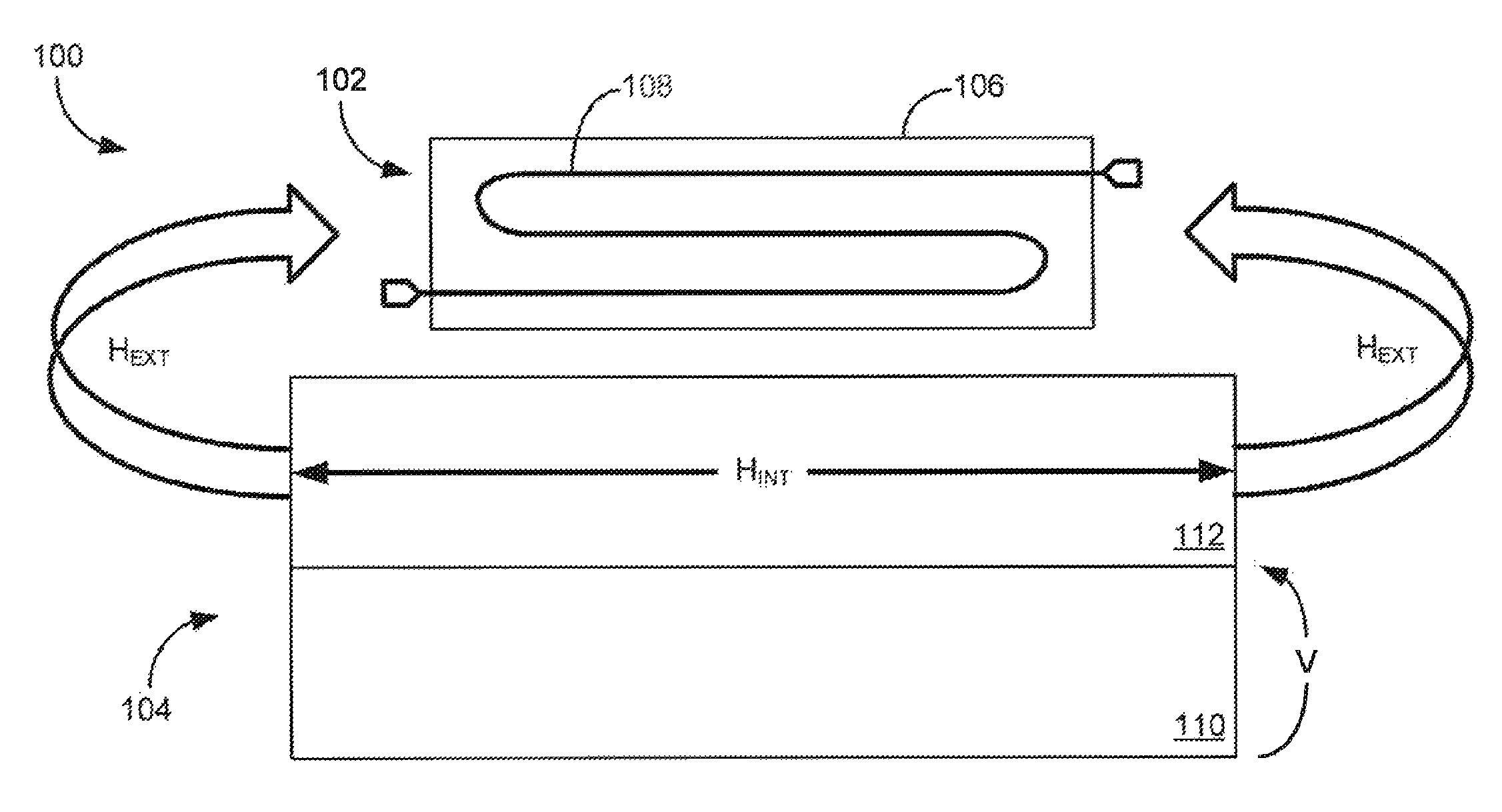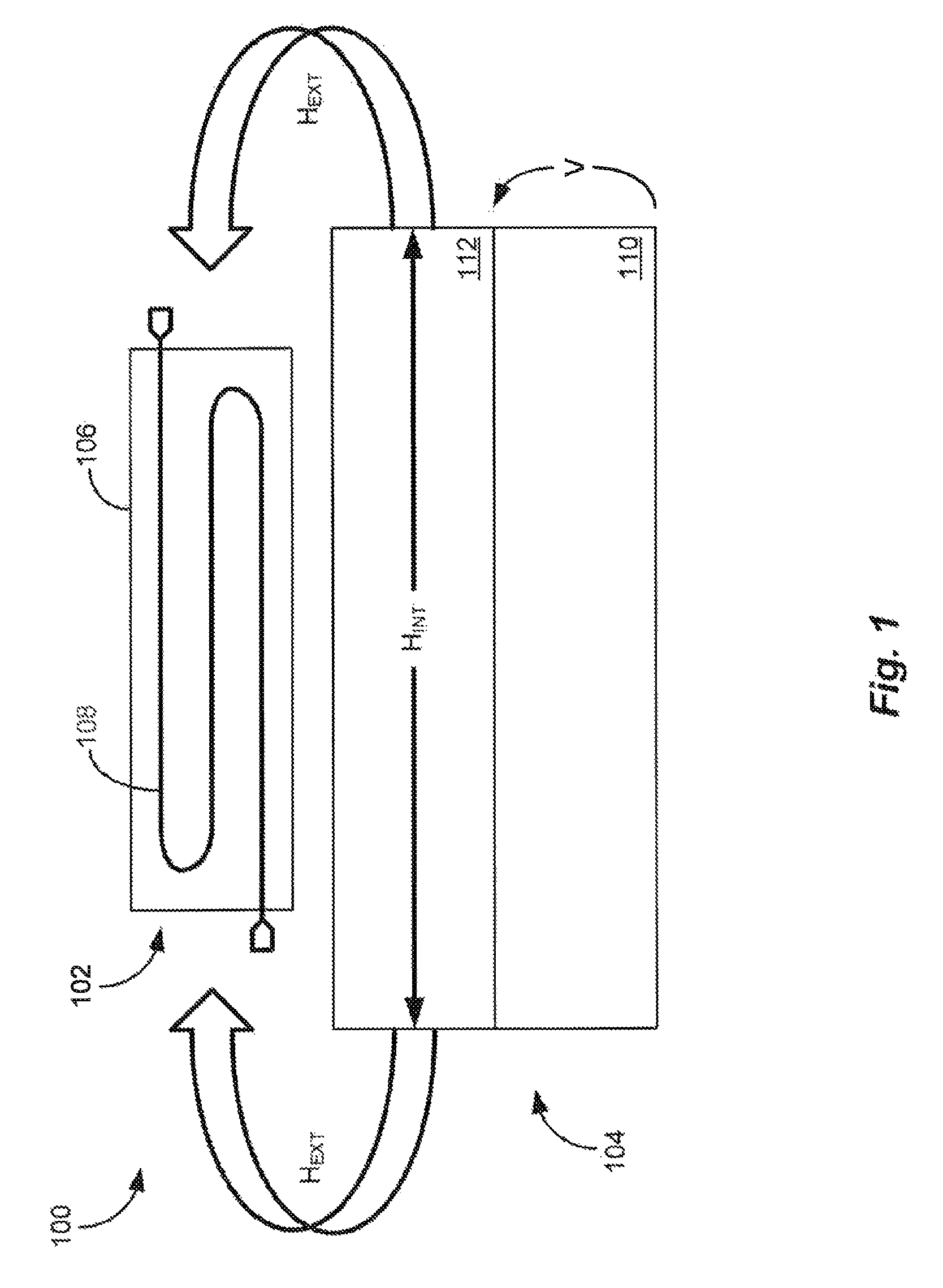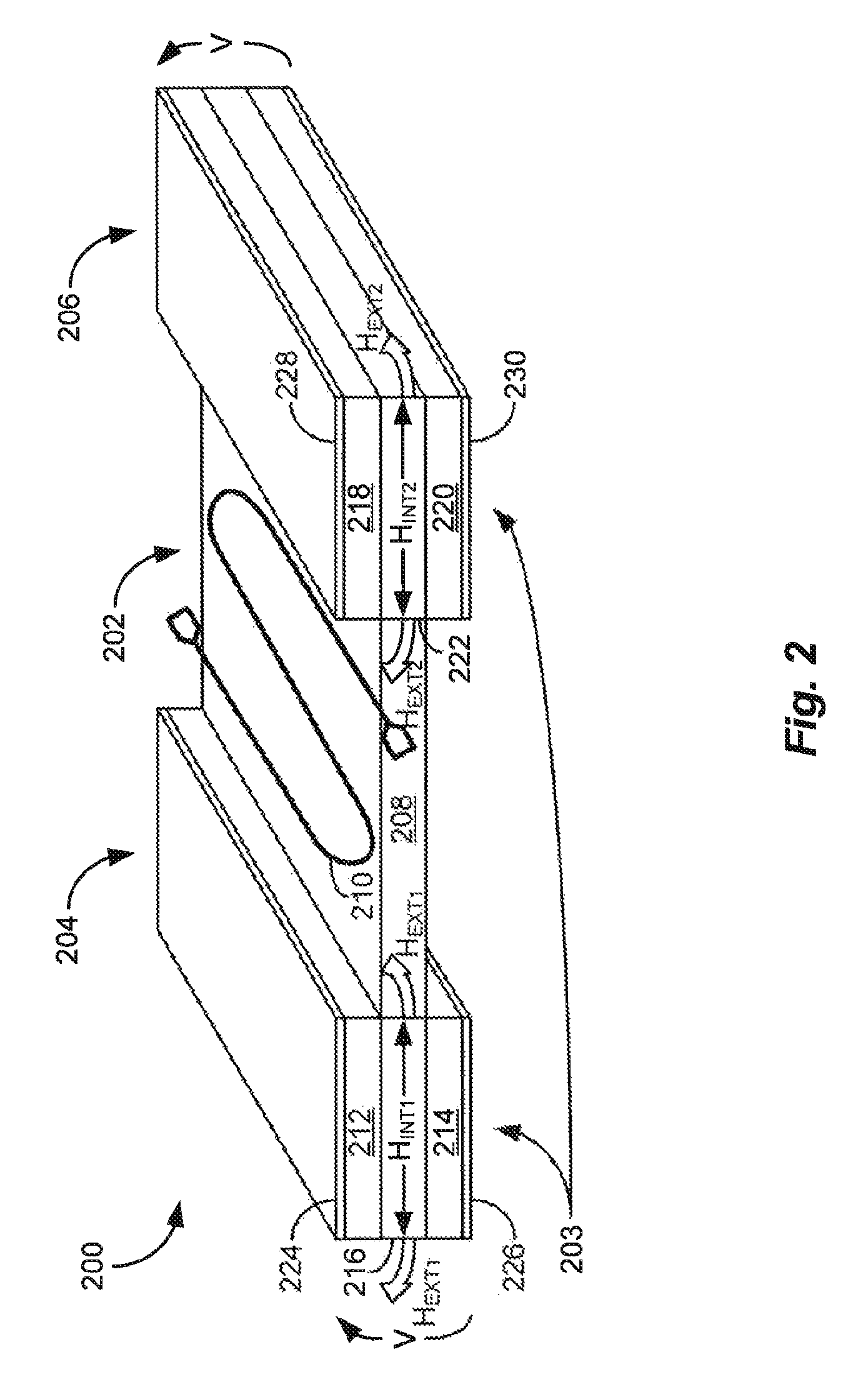Voltage tuning of microwave magnetic devices using magnetoelectric transducers
a technology of magnetoelectric transducers and voltage tuning, which is applied in the direction of piezoelectric/electrostrictive/magnetostrictive devices, piezoelectric/electrostriction/magnetostriction machines, magnetostrictive devices, etc. it can solve the problems of significant tunability of the operating frequency, the size, weight and cost of the conventional ferrite phase shifter devices, and the increase of the device size, weight and cost. , to achiev
- Summary
- Abstract
- Description
- Claims
- Application Information
AI Technical Summary
Benefits of technology
Problems solved by technology
Method used
Image
Examples
Embodiment Construction
[0026]The disclosure of U.S. Provisional Patent Application No. 61 / 296,997 filed Jan. 21, 2010 entitled VOLTAGE TUNING OF MICROWAVE MAGNETIC DEVICES USING MAGNETOELECTRIC TRANSDUCERS is incorporated herein by reference in its entirety.
[0027]Tunable microwave magnetic devices are disclosed that provide increased performance with reduced size, weight, and cost. The presently disclosed microwave magnetic devices are voltage-tunable devices that include ferrite substrates. To tune the devices, the magnetic permeability of the respective ferrite substrates is varied by external, voltage-tuned, magnetic fringe fields created by one or more magnetoelectric (ME) transducers.
[0028]FIG. 1 depicts a conceptual view of an illustrative embodiment of an exemplary voltage-tunable microwave magnetic device 100, in accordance with the present application. As shown in FIG. 1, the microwave magnetic device 100 includes a meander line micro-strip circuit 102, and an ME transducer 104. For example, the ...
PUM
 Login to View More
Login to View More Abstract
Description
Claims
Application Information
 Login to View More
Login to View More - R&D
- Intellectual Property
- Life Sciences
- Materials
- Tech Scout
- Unparalleled Data Quality
- Higher Quality Content
- 60% Fewer Hallucinations
Browse by: Latest US Patents, China's latest patents, Technical Efficacy Thesaurus, Application Domain, Technology Topic, Popular Technical Reports.
© 2025 PatSnap. All rights reserved.Legal|Privacy policy|Modern Slavery Act Transparency Statement|Sitemap|About US| Contact US: help@patsnap.com



